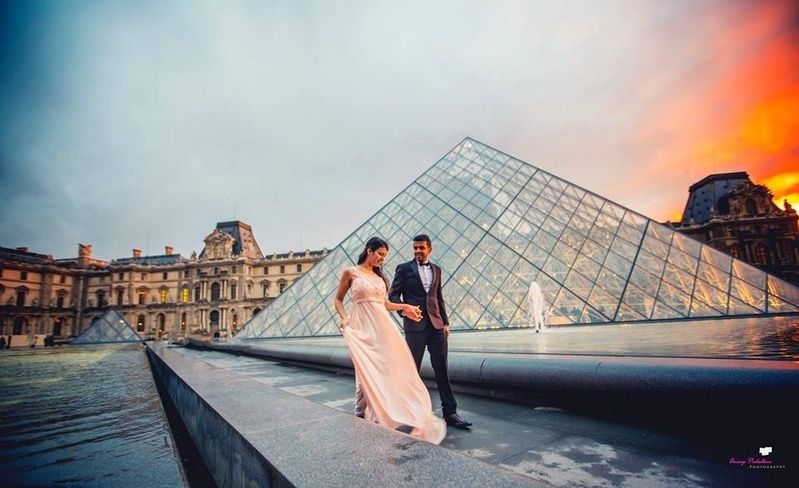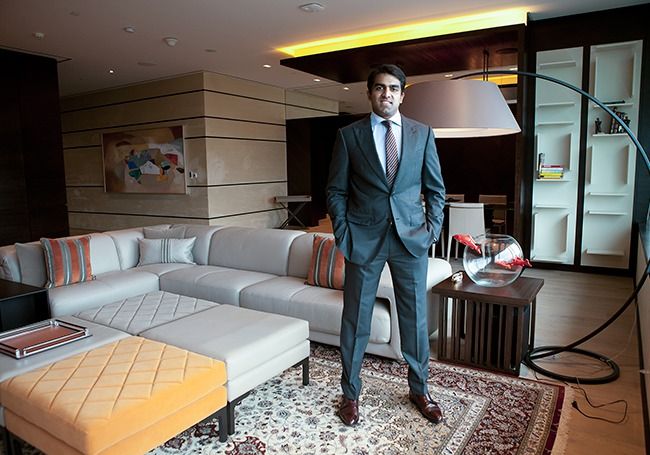Luxury Tourism: India is the New China

A recent report posits that by 2032, outbound tourism from India will be worth a whopping $44.7 billion.
India, a land of myriad cultures, ancient traditions, and a history that spans millennia, has always been a focal point on the global stage. But in recent years, a new narrative is emerging from this subcontinent, one that is reshaping the contours of global travel. The Indian luxury traveler, a demographic that's burgeoning in numbers and influence, is taking center stage, and the world is taking notice. With a rich tapestry of experiences at home, these travelers are now seeking to weave new stories across the globe. Their aspirations, backed by robust economic growth and a renewed sense of global identity, are making India the new epicenter of outbound tourism, replacing stalwarts like China. This shift is not just about numbers; it's a story of evolving preferences, rising economic prowess, and a deep-rooted cultural ethos that seeks to explore and assimilate.
The global travel industry, which has seen the dominance of Western travelers and more recently, the Chinese, is now gearing up for the Indian wave. The signs are evident. From luxury resorts in the Maldives to shopping streets in Paris, the presence of the Indian luxury traveler is palpable. But what's driving this shift? Why is the Indian traveler, especially the luxury segment, becoming a force to reckon with on the global stage? To understand this, one needs to delve deep into the socio-economic and cultural fabric of India and the changing dynamics of its outbound tourism market.
Part I: The Meteoric Rise of the Indian Outbound Tourism Market
The numbers are staggering and tell a tale of rapid ascent. According to a report by IPK International, in 2022, India emerged as the largest source market for outbound travelers in Asia. This wasn't a mere blip on the radar; it was a monumental year-on-year rise of 190%. Even as the world grappled with the aftermath of the pandemic and the ensuing travel restrictions, India's outbound travel volume recorded more than half of what was achieved in the pre-pandemic year of 2019.
This growth trajectory saw India leapfrogging traditional leaders in outbound tourism. In 2022, India's outbound travelers surpassed those of China, South Korea, and Japan. With approximately ten million foreign trips, India not only established itself as the leading Asian source market for outbound travel but also signaled its intent to be a dominant player on the global stage.

The destinations of choice for these travelers are as diverse as their motivations. Dubai, the USA, Thailand, Saudi Arabia, and Singapore topped the list, with a significant 70% of travelers preferring destinations within Asia. This trend, analysts believe, is not ephemeral. Projections suggest that the Indian traveler's zest for international sojourns will not only sustain but grow in 2023 and beyond.
The economic implications of this shift are profound. On average, an Indian traveler's expenditure stood at 235 euros per person per night on foreign trips. This isn't just about airfare and accommodation. This expenditure encompasses all aspects of travel, including transport, dining, shopping, and experiential activities. The nature of these trips is multifaceted. While holiday trips saw an impressive year-on-year increase of 64%, business trips weren't far behind, accounting for a significant quarter of all foreign travel. Other private outbound trips, which include visits to friends and relatives, made up around 10% of the total.
The trajectory of India's outbound tourism market has been on the rise for a while. International departures from India witnessed a steady climb from 16.6 million in 2013 to 26.3 million in 2018, marking a five-year CAGR of 9.6%. Europe, with its rich history and diverse cultures, attracted a significant chunk of these travelers. In 2018, Europe held a 17% share of the Indian outbound market. Within Europe, Central & Eastern Europe and Western Europe were the most favored, accounting for 39% and 33% of Indian visits, respectively.
The future looks even brighter. A recent report posits that by 2032, outbound tourism from India will be worth a whopping $44.7 billion. This bullish outlook is further corroborated by data from travel software company RateGain, which found that international leisure flight bookings from India surged by 40% for trips between June and August, compared to the same period in the previous year. This figure, RateGain notes, represents the zenith of outbound leisure flight bookings from India in the post-pandemic era.
Omri Morgenshtern, CEO of Singapore-based online travel agency Agoda, encapsulates the sentiment of the global travel industry. He observed that Indian travelers have been searching for international trips at a pace faster than travelers from any other global market. Agoda's data revealed a whopping 225% jump in outbound travel searches from Indian travelers from 2019 to mid-May of the subsequent year.
In essence, the Indian outbound tourism market's meteoric rise is not just a function of numbers. It's a confluence of rising economic power, a young and aspirational demographic, and a cultural ethos that seeks to explore, experience, and assimilate. The world, it seems, is now the oyster of the Indian luxury traveler.
Part II: Decoding the New Age Indian Luxury Traveler
- Young and Restless: The luxury travel segment in India is young. A significant chunk of this demographic falls between 25-40 years. They are the millennials and Gen Z, individuals who have grown up in a rapidly globalizing India, exposed to global cultures, and with a disposable income at their disposal.
- The Adventurous Spirit: The Indian luxury traveler is not one to lounge by the beach with a cocktail. They are out there, paragliding over it. They seek adventure, thrill, and experiences that get their adrenaline pumping.
- Cultural Connoisseurs: Rooted deeply in India's diverse cultural heritage, these travelers seek destinations offering rich cultural experiences. They want to immerse themselves in local traditions, festivals, and rituals.

- Bespoke Experiences: One size doesn't fit all for the Indian luxury traveler. They crave personalized services, tailor-made itineraries, and experiences curated just for them.
- Digital Natives: This is a demographic that's online. From researching destinations and reading reviews to making bookings and sharing their travel tales – they do it all online.
- The Rise of the Female Traveler: The Indian luxury travel scene is witnessing a surge in affluent female travelers. Empowered, educated, and economically independent, these women are exploring the world on their terms.
- Travel Patterns: The Indian luxury traveler doesn't just take that one annual vacation. They travel multiple times a year, with a mix of short weekend getaways and longer, more leisurely vacations.
- Luxury Stays: While they might be trekking through the day, they prefer their nights luxurious, opting for the finest hotels and resorts that offer premium services.
- Retail Therapy: Shopping is not just an activity; it's an experience. From luxury brands in Paris to local crafts in Bali, they seek unique products that tell a story.
- Gourmet Experiences: Food is not just sustenance; it's an integral part of the travel experience. They are keen to try local delicacies but also won't shy away from a seven-course meal at a Michelin-starred restaurant.
- Wellness Tourism: The luxury traveler from India is increasingly veering towards wellness tourism. Spa retreats, yoga workshops, detox vacations – they are all on the itinerary.
- Bleisure: Why just business when you can mix it with pleasure? Many Indian luxury travelers are combining their business trips with leisure, tacking on a few days for personal exploration.
- Eco-travel: Sustainable, eco-friendly travel options are gaining traction. This traveler is conscious of their carbon footprint and seeks out eco-friendly accommodations and experiences.
- Offbeat Destinations: While Europe and Southeast Asia remain evergreen favorites, the Indian luxury traveler is always on the lookout for something unique, something off the beaten path.
- Word of Mouth: In the age of digital, word of mouth still reigns supreme. Recommendations from friends and family play a pivotal role in shaping travel choices.
Conclusion: The Global Footprint of the Indian Luxury Traveler
The narrative of the Indian luxury traveler is not just a fleeting trend; it's a testament to India's evolving socio-economic landscape and its burgeoning global influence. As the world's most populous nation, India's demographic dividend, combined with its economic prowess, is reshaping global travel dynamics. The luxury traveler from India is not just a tourist; they are ambassadors of a rich cultural tapestry, seeking to weave their stories into the global narrative.
Historically, India has been a land of grandeur, where tales of maharajas and their opulent lifestyles have captured global imagination. Today, the modern Indian luxury traveler, while vastly different from the maharajas of yore, carries forward that legacy of seeking the finest experiences. They are the new-age explorers, driven by an insatiable curiosity and an innate desire to immerse themselves in diverse cultures, all while cherishing the comforts of luxury.
The data underscores the significance of this demographic. With an average expenditure of 235 euros per person per night on foreign trips, the Indian luxury traveler is a coveted segment for global travel and hospitality industries. Their choices are not just driven by popular destinations but are a reflection of their evolving preferences. From the historical streets of Europe to the pristine beaches of Southeast Asia, their footprints are evident. Their influence is not just limited to travel destinations but extends to global luxury brands, culinary experiences, and even the arts.
However, this rise is not just about economic might. It's a reflection of a deeper cultural shift. The Indian ethos, rooted in exploration and knowledge-seeking, is manifesting in the choices of the luxury traveler. They are not just seeking relaxation; they are on a quest for experiences, stories, and memories. This is evident in their diverse travel choices, from adventure trips to cultural immersions. The luxury traveler from India is redefining luxury, moving beyond materialistic indulgence to a more experiential form of luxury.
Furthermore, the technological revolution has played a pivotal role in this transformation. The tech-savvy Indian luxury traveler, armed with information at their fingertips, is more informed and discerning in their choices. They seek personalization, value authenticity, and are increasingly conscious of sustainable and eco-friendly travel options. This digital empowerment has not only influenced their travel choices but has also made them influencers in their own right, shaping global travel trends.
The global travel industry is at an inflection point. The pandemic, while disruptive, has also been a catalyst for change. As borders reopen and the world embraces the new normal, the Indian luxury traveler stands at the forefront of this change. Their rising influence is not just a business opportunity for the global travel industry but a chance to understand and cater to a diverse and dynamic demographic.
In conclusion, the story of the Indian luxury traveler is a testament to India's evolving global narrative. It's a story of aspiration, exploration, and influence. As India cements its position as a global economic powerhouse, its citizens, especially the luxury travelers, are scripting a new global narrative. They are not just travelers; they are storytellers, influencers, and ambassadors of a new global order. The world is not just a destination for them; it's a canvas, and they are painting it with their unique hues of experiences, memories, and aspirations. The Indian luxury traveler is here to stay, and the world is taking notice.


